What'sNEW April - June 2014
| 27 June 2014 |
What'sNEW about HGT  | | |
The same genes were recruited within the different species to make evolutionarily new structures that function similarly.
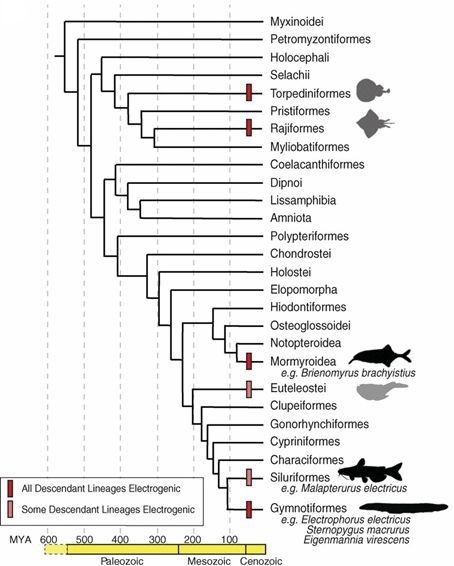 Convergent evolution is the separate evolution of the same systems or features in unrelated species. The phenomenon, a surprise for standard darwinian theory, is observed in all forms of life. If random mutations supply the raw material for adaptation and evolution, how could there be so many coincidences?
Convergent evolution is the separate evolution of the same systems or features in unrelated species. The phenomenon, a surprise for standard darwinian theory, is observed in all forms of life. If random mutations supply the raw material for adaptation and evolution, how could there be so many coincidences?
But if genetic programs are very old, and can be preserved even when silent, and can be easily acquired by horizontal gene transfer (HGT), as in cosmic ancestry, convergent evolution is to be expected. Now sixteen biologists, geneticists, biochemists, and specialists in related fields from across the United States have analyzed one example of the phenomenon, epitomized by the electric eel. We think their analysis favors cosmic ancestry. Here is their abstract in full:
Little is known about the genetic basis of convergent traits that originate repeatedly over broad taxonomic scales. The myogenic electric organ has evolved six times in fishes to produce electric fields used in communication, navigation, predation, or defense. We have examined the genomic basis of the convergent anatomical and physiological origins of these organs by assembling the genome of the electric eel (Electrophorus electricus) and sequencing electric organ and skeletal muscle transcriptomes from three lineages that have independently evolved electric organs. Our results indicate that, despite millions of years of evolution and large differences in the morphology of electric organ cells, independent lineages have leveraged similar transcription factors and developmental and cellular pathways in the evolution of electric organs.
 Jason R. Gallant, Lindsay L. Traeger et al., "Genomic basis for the convergent evolution of electric organs" [abstract], doi:10.1126/science.1254432, p 1522-1525 v 344, Science, 27 Jun 2014. (The opening quotation comes from the Editor's Summary.) Jason R. Gallant, Lindsay L. Traeger et al., "Genomic basis for the convergent evolution of electric organs" [abstract], doi:10.1126/science.1254432, p 1522-1525 v 344, Science, 27 Jun 2014. (The opening quotation comes from the Editor's Summary.)
 Scientists find the shocking truth about electric fish by Terry Devitt, University of Wisconsin-Madison (+Newswise), 26 Jun 2014. Scientists find the shocking truth about electric fish by Terry Devitt, University of Wisconsin-Madison (+Newswise), 26 Jun 2014.
 Convergent Evolution is the related section of "Neo-Darwinism: The Current Paradigm". Convergent Evolution is the related section of "Neo-Darwinism: The Current Paradigm".
 Viruses and Other Gene Transfer Mechanisms is a related CA webpage. Viruses and Other Gene Transfer Mechanisms is a related CA webpage.
The neo-Darwinist population-genetics tradition... will look ridiculous in retrospect, because it is ridiculous — Lynn Margulis, cited in Evolution Revolution by Alan Bennett, May 2014.
 Thanks, Ken Jopp, for the book recomendation, 16 Jun 2014. Thanks, Ken Jopp, for the book recomendation, 16 Jun 2014.
 Lynn Margulis, 1938-2011, Azimuth, accessed 22 Jun 2014. Lynn Margulis, 1938-2011, Azimuth, accessed 22 Jun 2014.
| 10 June 2014 |
What'sNEW about HGT  | |
|
...Suggesting that recruitment of endonucleases from mobile elements as ready-made tools for genome manipulation is a general route of evolution of adaptive immunity.
 Mart Krupovic et al., "Casposons: a new superfamily of self-synthesizing DNA transposons at the origin of prokaryotic CRISPR-Cas immunity" [abstract | html], doi:10.1186/1741-7007-12-36, BMC Biology, 19 May 2014. Mart Krupovic et al., "Casposons: a new superfamily of self-synthesizing DNA transposons at the origin of prokaryotic CRISPR-Cas immunity" [abstract | html], doi:10.1186/1741-7007-12-36, BMC Biology, 19 May 2014.
 Viruses and Other Gene Transfer Mechanisms is the main related CA webpage. Viruses and Other Gene Transfer Mechanisms is the main related CA webpage.
If such dust grains or rocks were incorporated into the preplanetary nebula, then every planet and moon that formed would be infected with life.

 Christopher P. McKay, "Requirements and limits for life in the context of exoplanets" [abstract | pdf], doi:10.1073/pnas.1304212111, Proc. Nat. Acad. Sci. USA, online 9 Jun 2014. Christopher P. McKay, "Requirements and limits for life in the context of exoplanets" [abstract | pdf], doi:10.1073/pnas.1304212111, Proc. Nat. Acad. Sci. USA, online 9 Jun 2014.
 Life on Europa, Other Moons, Other Planets? has links about other worlds that might carry life. Life on Europa, Other Moons, Other Planets? has links about other worlds that might carry life.
 ...Rosetta Comet Comes Alive (4-minute video), Science Alert, 6 Jun 2014. ...Rosetta Comet Comes Alive (4-minute video), Science Alert, 6 Jun 2014.
 Comet Rendezvous is a related section of the webpage "Can The Theory Be Tested?". Comet Rendezvous is a related section of the webpage "Can The Theory Be Tested?".
...Nonscience and pseudoscience are characterized by untestability, resistance to contrary evidence and preformed conclusion.
 Roger W. Cohen paraphrases Karl Popper in [a letter to] The Wall Street Journal, online 3 Jun 2014. Roger W. Cohen paraphrases Karl Popper in [a letter to] The Wall Street Journal, online 3 Jun 2014.
 Can The Theory Be Tested? is a local webpage that discusses Popper. Can The Theory Be Tested? is a local webpage that discusses Popper.
Reverse transcription-derived sequences account for at least half of the human genome. ...These retroelements are formidable motors of evolution....
 Priscilla Turelli et al., "Interplay of TRIM28 and DNA methylation in controlling human endogenous retroelements" [abstract], doi:10.1101/gr.172833.114, Genome Res., 30 May 2014. Priscilla Turelli et al., "Interplay of TRIM28 and DNA methylation in controlling human endogenous retroelements" [abstract], doi:10.1101/gr.172833.114, Genome Res., 30 May 2014.
I am absolutely convinced that life is not restricted to the planet Earth because I have found the remains of lifeforms that are absolutely, conclusively extraterrestrial.
 Richard Hoover interviewed by Lee Speigel, Huffington Post, posted on OpenMinds, 19 Feb 2014. Richard Hoover interviewed by Lee Speigel, Huffington Post, posted on OpenMinds, 19 Feb 2014.
 Fossilized bacteria in meteorites are obvious (subject of the interview), What'sNEW, 3 Mar 2011. Fossilized bacteria in meteorites are obvious (subject of the interview), What'sNEW, 3 Mar 2011.
 Did NASA's Opportunity rover find evidence for life on Mars in 2004? (subject of the accompanying text), What'sNEW, 26 Jul 2013. Did NASA's Opportunity rover find evidence for life on Mars in 2004? (subject of the accompanying text), What'sNEW, 26 Jul 2013.
 Richard B. Hoover, "Microfossils, Biominerals, and Chemical Biomarkers in Meteorites" [e-abstract], p 43-65, Perspectives in Astrobiology, R.B. Hoover, A.Yu. Rozanov, R. Paepe, eds., v 366, NATO Science Series, I: Life and Behavioural Sciences, ISBN: 978-1-58603-512-9, 2005. Richard B. Hoover, "Microfossils, Biominerals, and Chemical Biomarkers in Meteorites" [e-abstract], p 43-65, Perspectives in Astrobiology, R.B. Hoover, A.Yu. Rozanov, R. Paepe, eds., v 366, NATO Science Series, I: Life and Behavioural Sciences, ISBN: 978-1-58603-512-9, 2005.
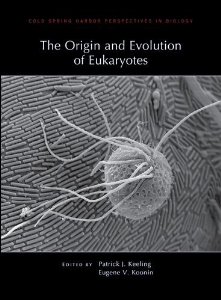 The Origin and Evolution of Eukaryotes is the newest addition to the "Perspectives in Biology" series from Cold Spring Harbor Laboratory Press. It contains 24 recent articles by leading experts in fields related to the subject. Of course we can learn a lot from them. For example, the last eukaryotic common ancestor likely had a "splicesomal system ...comparable to that of intron-rich modern eukaryotic organisms..." (Iremia and Roy, p 309).
The Origin and Evolution of Eukaryotes is the newest addition to the "Perspectives in Biology" series from Cold Spring Harbor Laboratory Press. It contains 24 recent articles by leading experts in fields related to the subject. Of course we can learn a lot from them. For example, the last eukaryotic common ancestor likely had a "splicesomal system ...comparable to that of intron-rich modern eukaryotic organisms..." (Iremia and Roy, p 309).
We have explored many of the articles for evidence relevant to our thematic question: Where do new genetic programs come from? According to mainstream theory, they originate gradually, following mutation and selection pressure within species. Evidence for these origins should be abundant by now. But, so far, we have found nothing convincing, even among these new articles. Instead, usually, gene origins are simply assumed, as in "...Much of the molecular toolkit for animal development originated in the premetazoan era..." (Alegado and N. King, p 401). But the evidence indicates only that the subject genes, at that early time, already existed. Evidence showing how — or even that — they "originated" is not mentioned.
For another example of an unsupported assumption, Geoffrey I. McFadden writes, "Approximately 2 billion years after cyanobacteria-like organisms had invented photosynthesis..." (p 268). The biological evidence indicates only that photosynthesis must have existed by then, not how — or that, ever — it was invented. Of course, it may have been invented, as McFadden assumes, but where is the evidence for that process?
Meanwhile, several of the articles acknowledge that endosymbiosis and horizontal gene transfer profoundly affect the evolution of eukaryotes. And some authors recognize genetic programs that are apparently much older than they were expected to be. This is progress.
The copyright page promises that the articles in the collection will be online at www.cshperspectives.org. We hope this will allow us to word-search them with our computer, because the book's index is not comprehensive. We welcome any pointers to evidence we may have missed.
 Patrick J. Keeling and Eugene V. Koonin, eds., The Origin And Evolution of Eukaryotes, ISBN-10:1621820289, Cold Spring Harbor Laboratory Press, 31 May 2014. Patrick J. Keeling and Eugene V. Koonin, eds., The Origin And Evolution of Eukaryotes, ISBN-10:1621820289, Cold Spring Harbor Laboratory Press, 31 May 2014.
...Methanogens could potentially inhabit the subsurface of Mars.
 Earth Organisms Survive Under Martian Conditions, University of Arkansas (+ScienceDaily +Newswise), 19 May 2014. Earth Organisms Survive Under Martian Conditions, University of Arkansas (+ScienceDaily +Newswise), 19 May 2014.
 Bacteria... and Bacteria... and  Life on Mars! are related local webpages. Life on Mars! are related local webpages.
 Thanks, Theodore Rigley. Thanks, Theodore Rigley.
 NASA plans Mars sample-return rover by Alexandra Witze, Nature, 13 May 2014. NASA plans Mars sample-return rover by Alexandra Witze, Nature, 13 May 2014.
 Eric Hand, "NASA planners gear up for martian sample return" [abstract], p 787-788 v 344, Science, 23 May 2012. Eric Hand, "NASA planners gear up for martian sample return" [abstract], p 787-788 v 344, Science, 23 May 2012.
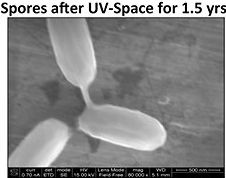 Bacteria can survive long exposure to the cold, vacuum and radiation of space. NASA teams conducted experiments to assess the danger that a mission from Earth might carry viable germs to Mars and contaminate it. They learned that this concern is well-warranted, because the tested germs proved to be quite hardy. The surprising results, published earlier in the journal Astrobiology, will influence the planning and design of future Mars missions. The studies also show that panspermia via meteorites is likelier than previously suspected.
Bacteria can survive long exposure to the cold, vacuum and radiation of space. NASA teams conducted experiments to assess the danger that a mission from Earth might carry viable germs to Mars and contaminate it. They learned that this concern is well-warranted, because the tested germs proved to be quite hardy. The surprising results, published earlier in the journal Astrobiology, will influence the planning and design of future Mars missions. The studies also show that panspermia via meteorites is likelier than previously suspected.
 Space Station Research Shows That Hardy Little Space Travelers Could Colonize Mars by Melissa Gaskill, NASA Johnson Space Center, 2 May 2014. Space Station Research Shows That Hardy Little Space Travelers Could Colonize Mars by Melissa Gaskill, NASA Johnson Space Center, 2 May 2014.
 Survival of Rock-Colonizing Organisms After 1.5 Years in Outer Space [abstract], Survival of Rock-Colonizing Organisms After 1.5 Years in Outer Space [abstract],
 Resistance of Bacterial Endospores to Outer Space for Planetary Protection Purposes–Experiment PROTECT of the EXPOSE-E Mission [abstract], Resistance of Bacterial Endospores to Outer Space for Planetary Protection Purposes–Experiment PROTECT of the EXPOSE-E Mission [abstract],
 Survival of Bacillus pumilus Spores for a Prolonged Period of Time in Real Space Conditions [abstract], n 5 v 12, Astrobiology, 8 Jun 2012. Survival of Bacillus pumilus Spores for a Prolonged Period of Time in Real Space Conditions [abstract], n 5 v 12, Astrobiology, 8 Jun 2012.
 Bacteria: The Space Colonists is the main related local webpage. Bacteria: The Space Colonists is the main related local webpage.
 Thanks, George Stratton and Google Alerts. Thanks, George Stratton and Google Alerts.
| 2 May 2014 |
What'sNEW about HGT  | | |
Our findings implicate viruses... as a reservoir of genetic diversity for bacterial enzymes that underpin chemosynthesis in the deep oceans, an inter-disciplinary American team reports. Standard evolutionary theory has only a dubious, post hoc explanation for this phenomenon. But if viruses serve as a reservoir of genetic diversity, a basic prediction of cosmic ancestry is sustained.

 Karthik Anantharaman et al., "Sulfur Oxidation Genes in Diverse Deep-Sea Viruses" [abstract], doi:10.1126/science.1252229, Science, online 1 May 2014. Karthik Anantharaman et al., "Sulfur Oxidation Genes in Diverse Deep-Sea Viruses" [abstract], doi:10.1126/science.1252229, Science, online 1 May 2014.
 Viruses hijack deep-sea bacteria at hydrothermal vents by Jim Erickson, University of Michigan, 1 May 2014. Viruses hijack deep-sea bacteria at hydrothermal vents by Jim Erickson, University of Michigan, 1 May 2014.
 Viruses and Other Gene Transfer Mechanisms is the main related CA webpage. Viruses and Other Gene Transfer Mechanisms is the main related CA webpage.
Where Do New Genes Come From, asks Carl Zimmer in an article in today's Science Times. Drawing on research including that by Diethard Trautz of Max Planck University, Plön, he reports that gene duplication is their source. Furthermore, these duplicates have evolved so quickly that they look wholly unrelated to their predecessors — their "evolution" eludes observation. May we politely suggest that these orphan genes may have been acquired by HGT, already a well-observed phenomenon? Besides, we thought "orphan" and "de novo" were not synonymous, nor is a copy (DNA) the same as a transcript (RNA) for making protein. But nevermind; Zimmer's article is not for careful analysis. Its purpose is to assure the lay public that the darwinian paradigm is making noteworthy progress. In that it probably succeeds.

 Carl Zimmer, "The Continuing Evolution of Genes" [html], The New York Times, 29 Apr 2014. Carl Zimmer, "The Continuing Evolution of Genes" [html], The New York Times, 29 Apr 2014.
 Duplication... has related updates since 2005. Duplication... has related updates since 2005.
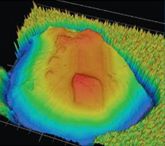 Lunar samples gathered by the Apollo 17 mission contain complex organics. The NASA scientists who detected the organics suggest, "...The most probable source is through the accretion of exogenous meteoritic kerogen from micrometeorite impacts...." They do not suggest that the kerogen comes from life, but on Earth it ultimately does.
Lunar samples gathered by the Apollo 17 mission contain complex organics. The NASA scientists who detected the organics suggest, "...The most probable source is through the accretion of exogenous meteoritic kerogen from micrometeorite impacts...." They do not suggest that the kerogen comes from life, but on Earth it ultimately does.
 Kathie L. Thomas-Keprta et al., "Organic matter on the Earth's Moon" [abstract], doi:10.1016/j.gca.2014.02.047, p 1-15 v 134, Geochimica et Cosmochimica Acta, 1 Jun 2014. Kathie L. Thomas-Keprta et al., "Organic matter on the Earth's Moon" [abstract], doi:10.1016/j.gca.2014.02.047, p 1-15 v 134, Geochimica et Cosmochimica Acta, 1 Jun 2014.
 Margaret M. Moerchen, "Organic Delivery Device," doi:10.1126/science.344.6180.129-a, p 129 v 344, Science, 11 Apr 2014. Margaret M. Moerchen, "Organic Delivery Device," doi:10.1126/science.344.6180.129-a, p 129 v 344, Science, 11 Apr 2014.
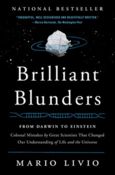 Brilliant Blunders by Mario Livio has an excellent section on Fred Hoyle. Hoyle's supposed blunder was his steady state theory of the universe, but, as in the other four episodes (Charles Darwin, William Thomson, Linus Pauling and Albert Einstein), the story is about much more than that. Livio's history of the now-dominant big bang theory is concise and informative. He reminds us that both steady-state and big-bang cosmologies require the creation of matter from ...apparently nothing. He ignores the later versions of the steady state theory, but explains how the abundance of helium favors the big bang. Livio's probing research often rewards the reader; Hoyle's crucial prediction of an unknown carbon resonance is especially well told.
Brilliant Blunders by Mario Livio has an excellent section on Fred Hoyle. Hoyle's supposed blunder was his steady state theory of the universe, but, as in the other four episodes (Charles Darwin, William Thomson, Linus Pauling and Albert Einstein), the story is about much more than that. Livio's history of the now-dominant big bang theory is concise and informative. He reminds us that both steady-state and big-bang cosmologies require the creation of matter from ...apparently nothing. He ignores the later versions of the steady state theory, but explains how the abundance of helium favors the big bang. Livio's probing research often rewards the reader; Hoyle's crucial prediction of an unknown carbon resonance is especially well told.
Livio also mentions Hoyle's doubts about the origin of life, and Richard Dawkins' coining of the term "Hoyle's falacy" in response. Dawkins is certain that life can, rather quickly and easily, originate from nonlife. But the direct evidence, and the possibility of cosmic ancestry, make that belief far from certain. We hope to live long enough to see Dawkins' blunder exposed.
 Mario Livio, Brilliant Blunders: from Darwin to Einstein, ISBN-10:1439192367, Simon & Schuster, 14 May 2013. Mario Livio, Brilliant Blunders: from Darwin to Einstein, ISBN-10:1439192367, Simon & Schuster, 14 May 2013.
 Fred Hoyle... and Fred Hoyle... and  The End and the Big Bang are related local webpages. The End and the Big Bang are related local webpages.
 Dawkins is rebutted by philosopher Pamela Lyon, What'sNEW, 13 Sep 2013. Dawkins is rebutted by philosopher Pamela Lyon, What'sNEW, 13 Sep 2013.
 Thanks for the book, Genevieve Christy. Thanks for the book, Genevieve Christy.
We enjoyed many things about James Lovelock's latest book, A Rough Ride to the Future. He reminisces about the development of the Gaia theory and the adversities it met; the invention of Daisyworld was his response to one. It was good to be reminded of his role in the discovery of CFCs in the atmosphere and the eventual banning of them. Many similar episodes include mention of allies in his quest, Lynn Margulis most prominent among them.
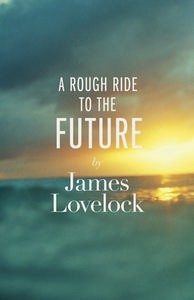 A persistent theme is his status as an independent inventor/scientist, and not an employee of a large industry or university. He agrees that big teams are necessary, but he clearly prefers his independence. (And he distrusts peer-review.) Of course he cares about the environment, but he thinks that a lot of environmentalism is misguided. For example, without nuclear energy, we are left with coal as our main source of electricity.
A persistent theme is his status as an independent inventor/scientist, and not an employee of a large industry or university. He agrees that big teams are necessary, but he clearly prefers his independence. (And he distrusts peer-review.) Of course he cares about the environment, but he thinks that a lot of environmentalism is misguided. For example, without nuclear energy, we are left with coal as our main source of electricity.
Lovelock admits that the direst predictions of global warming, including his own, have not come true. For one reason, everyone undervalued the thermal inertia of the oceans — at least a thousand times that of the land and air. But warming in the very long run is inevitable, because heat from the sun is increasing. Earth could become like Venus. To deal with this trend, he recommends air-conditioned cities, leaving the rest of Gaia to respond without our interference. Even more radical, he thinks we might engineer a different life form, perhaps partially (or entirely?) electronic. This scenario is included in his observation that the whole planet evolves, and that this evolution accelerated drastically when the steam engine was invented. Humans are now the most influential participants in the evolution of Gaia.
We welcome any suggestions for how to deal with longterm climate change. We only note that the Gaian climate-management already apparent may emerge from genetic programs that precede the origin of life on Earth. Of course, Lovelock could not endorse that idea without risk of crucifixion. Actually, his gentle story-telling and radicalism seem rather Christ-like.
 James Lovelock, A Rough Ride to the Future, ISBN-10:0241004764, Allen Lane (Penguin Books), 3 Apr 2014. James Lovelock, A Rough Ride to the Future, ISBN-10:0241004764, Allen Lane (Penguin Books), 3 Apr 2014.
 ...James Lovelock, review by Robert Colvile, The Telegraph, 3 Apr 2014. ...James Lovelock, review by Robert Colvile, The Telegraph, 3 Apr 2014.
 James Lovelock reflects on Gaia's legacy by Philip Ball, Nature News, 9 Apr 2014. James Lovelock reflects on Gaia's legacy by Philip Ball, Nature News, 9 Apr 2014.
 Gaia is the main related local webpage. Gaia is the main related local webpage.
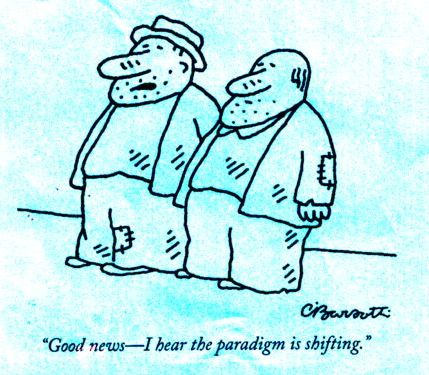
Charles Barsotti, The New Yorker, 27 Jan 2014.
 Thanks, Ellen Klyce. Thanks, Ellen Klyce.
 Saturn's Enceladus moon hides 'great lake' of water by Jonathan Amos, BBC News, 3 Apr 2014. Saturn's Enceladus moon hides 'great lake' of water by Jonathan Amos, BBC News, 3 Apr 2014.
 Icy Enceladus hides a watery ocean by Alexandra Witze, Nature News, 3 Apr 2014. Icy Enceladus hides a watery ocean by Alexandra Witze, Nature News, 3 Apr 2014.
 L. Iess et al., "The Gravity Field and Interior Structure of Enceladus" [abstract], doi:10.1126/science.1250551, p 78-80; and commentary by Richard A. Kerr, "Cassini Plumbs the Depths of the Enceladus Sea" [summary], p 17, v 344, Science, 3 Apr 2014. L. Iess et al., "The Gravity Field and Interior Structure of Enceladus" [abstract], doi:10.1126/science.1250551, p 78-80; and commentary by Richard A. Kerr, "Cassini Plumbs the Depths of the Enceladus Sea" [summary], p 17, v 344, Science, 3 Apr 2014.
 Life on Europa, Other Moons, Other Planets? has related links. Life on Europa, Other Moons, Other Planets? has related links.
 Thanks, Bob Sweeney. Thanks, Bob Sweeney.
|
 The Origin and Evolution of Eukaryotes is the newest addition to the "Perspectives in Biology" series from Cold Spring Harbor Laboratory Press. It contains 24 recent articles by leading experts in fields related to the subject. Of course we can learn a lot from them. For example, the last eukaryotic common ancestor likely had a "splicesomal system ...comparable to that of intron-rich modern eukaryotic organisms..." (Iremia and Roy, p 309).
The Origin and Evolution of Eukaryotes is the newest addition to the "Perspectives in Biology" series from Cold Spring Harbor Laboratory Press. It contains 24 recent articles by leading experts in fields related to the subject. Of course we can learn a lot from them. For example, the last eukaryotic common ancestor likely had a "splicesomal system ...comparable to that of intron-rich modern eukaryotic organisms..." (Iremia and Roy, p 309).

 Lunar samples gathered by the Apollo 17 mission contain complex organics. The NASA scientists who detected the organics suggest, "...The most probable source is through the accretion of exogenous meteoritic kerogen from micrometeorite impacts...." They do not suggest that the kerogen comes from life, but on Earth it ultimately does.
Lunar samples gathered by the Apollo 17 mission contain complex organics. The NASA scientists who detected the organics suggest, "...The most probable source is through the accretion of exogenous meteoritic kerogen from micrometeorite impacts...." They do not suggest that the kerogen comes from life, but on Earth it ultimately does. Brilliant Blunders by Mario Livio has an excellent section on Fred Hoyle. Hoyle's supposed blunder was his steady state theory of the universe, but, as in the other four episodes (Charles Darwin, William Thomson, Linus Pauling and Albert Einstein), the story is about much more than that. Livio's history of the now-dominant big bang theory is concise and informative. He reminds us that both steady-state and big-bang cosmologies require the creation of matter from ...apparently nothing. He ignores the later versions of the steady state theory, but explains how the abundance of helium favors the big bang. Livio's probing research often rewards the reader; Hoyle's crucial prediction of an unknown carbon resonance is especially well told.
Brilliant Blunders by Mario Livio has an excellent section on Fred Hoyle. Hoyle's supposed blunder was his steady state theory of the universe, but, as in the other four episodes (Charles Darwin, William Thomson, Linus Pauling and Albert Einstein), the story is about much more than that. Livio's history of the now-dominant big bang theory is concise and informative. He reminds us that both steady-state and big-bang cosmologies require the creation of matter from ...apparently nothing. He ignores the later versions of the steady state theory, but explains how the abundance of helium favors the big bang. Livio's probing research often rewards the reader; Hoyle's crucial prediction of an unknown carbon resonance is especially well told.

 Convergent evolution is the separate evolution of the same systems or features in unrelated species. The phenomenon, a surprise for standard darwinian theory, is observed in all forms of life. If random mutations supply the raw material for adaptation and evolution, how could there be so many coincidences?
Convergent evolution is the separate evolution of the same systems or features in unrelated species. The phenomenon, a surprise for standard darwinian theory, is observed in all forms of life. If random mutations supply the raw material for adaptation and evolution, how could there be so many coincidences?
 A persistent theme is his status as an independent inventor/scientist, and not an employee of a large industry or university. He agrees that big teams are necessary, but he clearly prefers his independence. (And he distrusts peer-review.) Of course he cares about the environment, but he thinks that a lot of environmentalism is misguided. For example, without nuclear energy, we are left with coal as our main source of electricity.
A persistent theme is his status as an independent inventor/scientist, and not an employee of a large industry or university. He agrees that big teams are necessary, but he clearly prefers his independence. (And he distrusts peer-review.) Of course he cares about the environment, but he thinks that a lot of environmentalism is misguided. For example, without nuclear energy, we are left with coal as our main source of electricity.